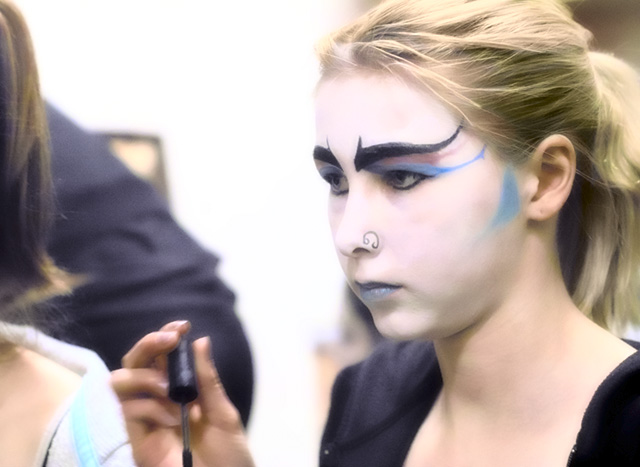Those “make-em-ups”: 20 years of emerging art from Wing-It Productions
“The spirit of improv itself is the inventive spirit.” —Andrew McMasters
The Working Artist Series with The Cabiri: Educating the audience
How does one get into aerial arts, anyway? It is no secret that one of the great problems of the performing arts is creating continuity. Not only continuity of style, and not only continuity of tradition, but also continuity of knowledge among practitioners as well as among audiences. For quite sometime in Seattle it has been fashionable among theater artists to talk about educating their audiences. The goal is noble but difficult.
The Show Must Go On, Part 3: The Structure and The Stakes
One piece of my self-assigned homework last week was to look at more storytelling guidelines, so I did. This set of storytelling tips on The Moth, hit me hard, especially this part: the stakes of the story need to be clear to you, and to the audience. Good news, then. Just by writing last week’s post, I figured out another piece of of why this story’s been tricky. I hadn’t identified the stakes of the story yet. Bad news: I didn’t know what the stakes were yet.
Tell Me the Hurt Thing
Push number four because the stairs are murder: a crooked rattle-
snake spine, windows painted shut, walls twice papered over,
built into catacombs you’re sure they know by heart: busted hall
lights & pitch dark landings, cul-de-sacs colored a murderous
blood-red.
Sandbox Radio IV: The Chase
With its delicate balance of music, pathos and humor Sandbox Radio’s director Leslie Law does much to honor radio programming of the past kept familiar by the likes of Prairie Home Companion, but this project brings to its audience so much more. Sandbox Radio pulls nary a punch and for many answers the question of what, precisely, audio theater will sound like in the future?
Live! The Realest MC: Posture and Poise
On the surface, Kyle Abraham’s new dance work at On the Boards, Live! The Realest MC, seems to be about gay issues. It is a queer retelling of The Adventures of Pinocchio. The reality, however, is more complex. It is as much about how sex roles, gender and homosexuality are framed largely by the context of race as it is about individual struggle and acceptance. This brings up other questions of race, of course, but in ways that most of the critics of dance and theater–who tend to be white and largely bourgeois–do not care to grasp because such a discussion, too, would prove reality more complex than currently fashionable when it seems easier to reduce it to psychodrama.
Crawling with the literati at APRIL’s Seattle LitCrawl
Our own new/hipness/literati/ice cream/microbrew diva, Sarah Anne Lloyd, crawled around with the literate folks at Seattle’s APRIL LitCrawl and almost forgot to tell us about it. Nevertheless, I wrested her photos from her as Bill and Ted would say “most heinously” so that you could enjoy them.
Straight from the Can: Tin Can Studio serves up food for the soul and then some
In keeping with her art’s humble origins, Hayes and her husband Michael White Hayes drew their new art space’s moniker from a similar pool. “We were very deliberate about choosing the name Tin Can Studio. A tin can is a simple, common thing but it’s a very useful invention,” says Hayes. “It revolutionized the way people feed themselves. Tin Can Studio is like that tin can because art feeds people’s souls.”
The Working Artist: Spotlight on the Cabiri – Behind the Scenes
Many people watch pseudo-documentary work such as Behind the Music with the Latest Lame Boy Band and the like. But even those quasi-real glimpses at the artist’s life reek of antiseptic. Yes, they occasionally contain elements of soap opera and other things to please the mostly hypnotized viewers of “reality” television but they rarely touch on what artists actually do.
An Interview with the Solo Performance Festival’s Keira McDonald
The Star’s José Amador sits down to talk with Keira McDonald, the Solo Performance Festival founder and curator, about her role within the festival and in guiding new artists through the creative process; as well as what lies beneath her decision to leave her leadership role after six years at the helm.
Except where otherwise noted, the content on this site is licensed under a Creative Commons Attribution 4.0 International License.









